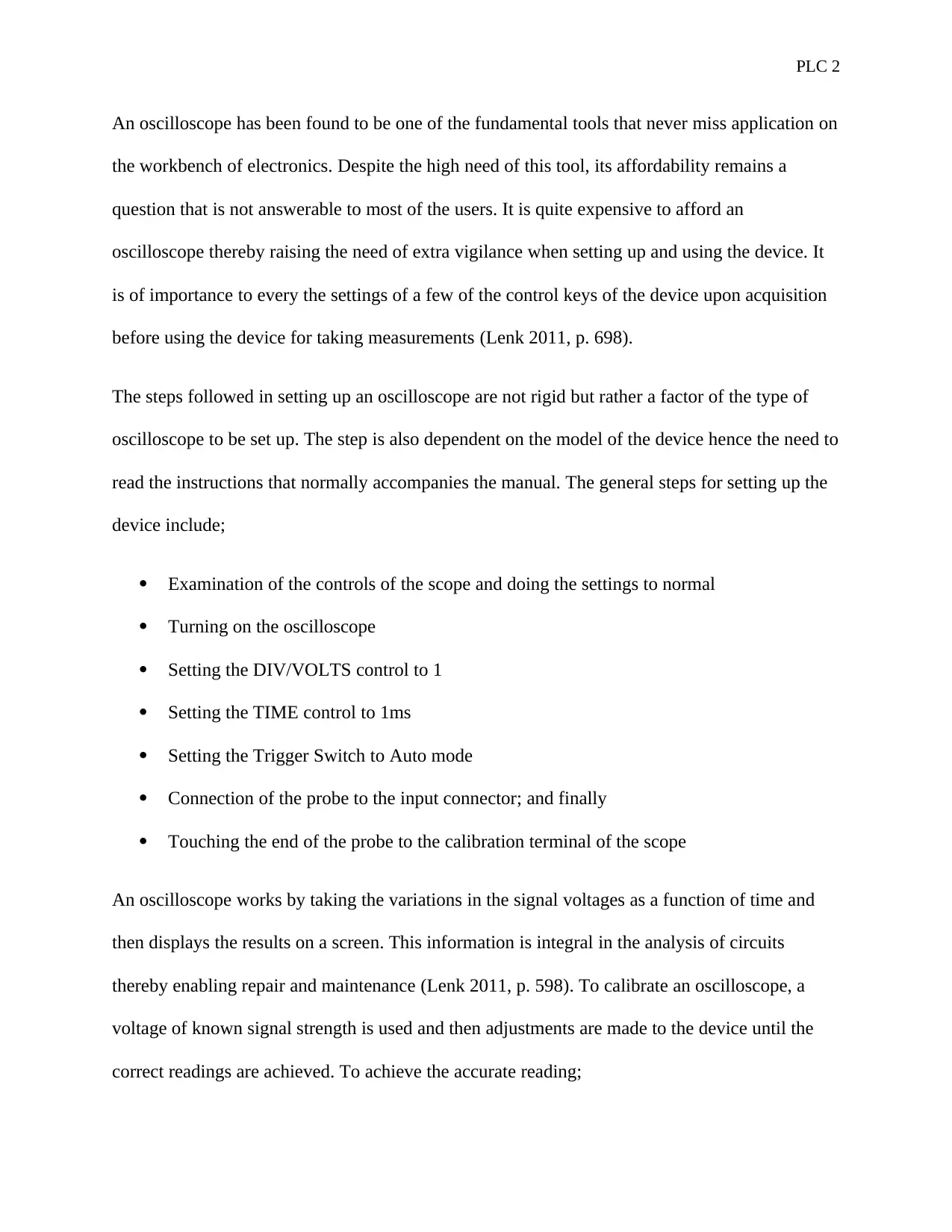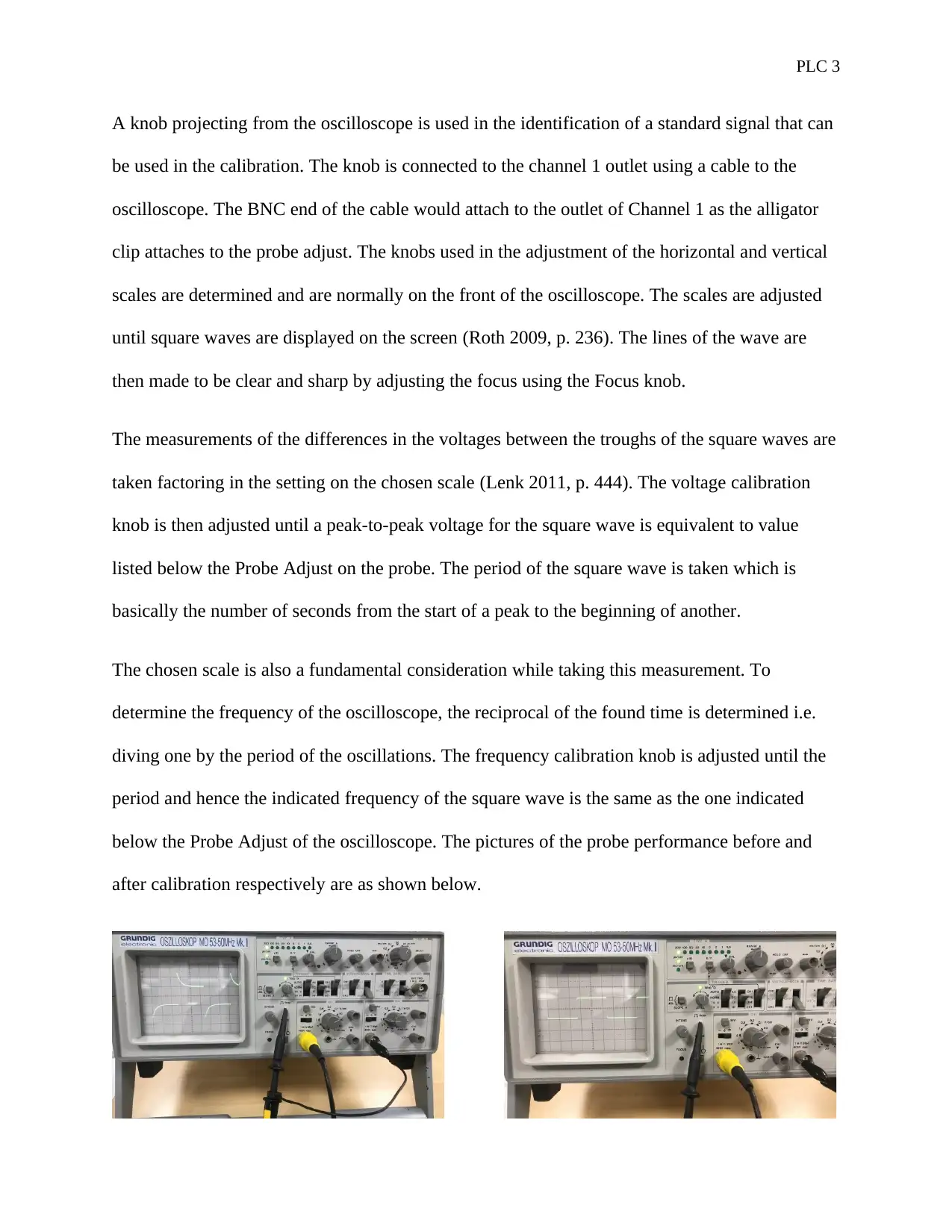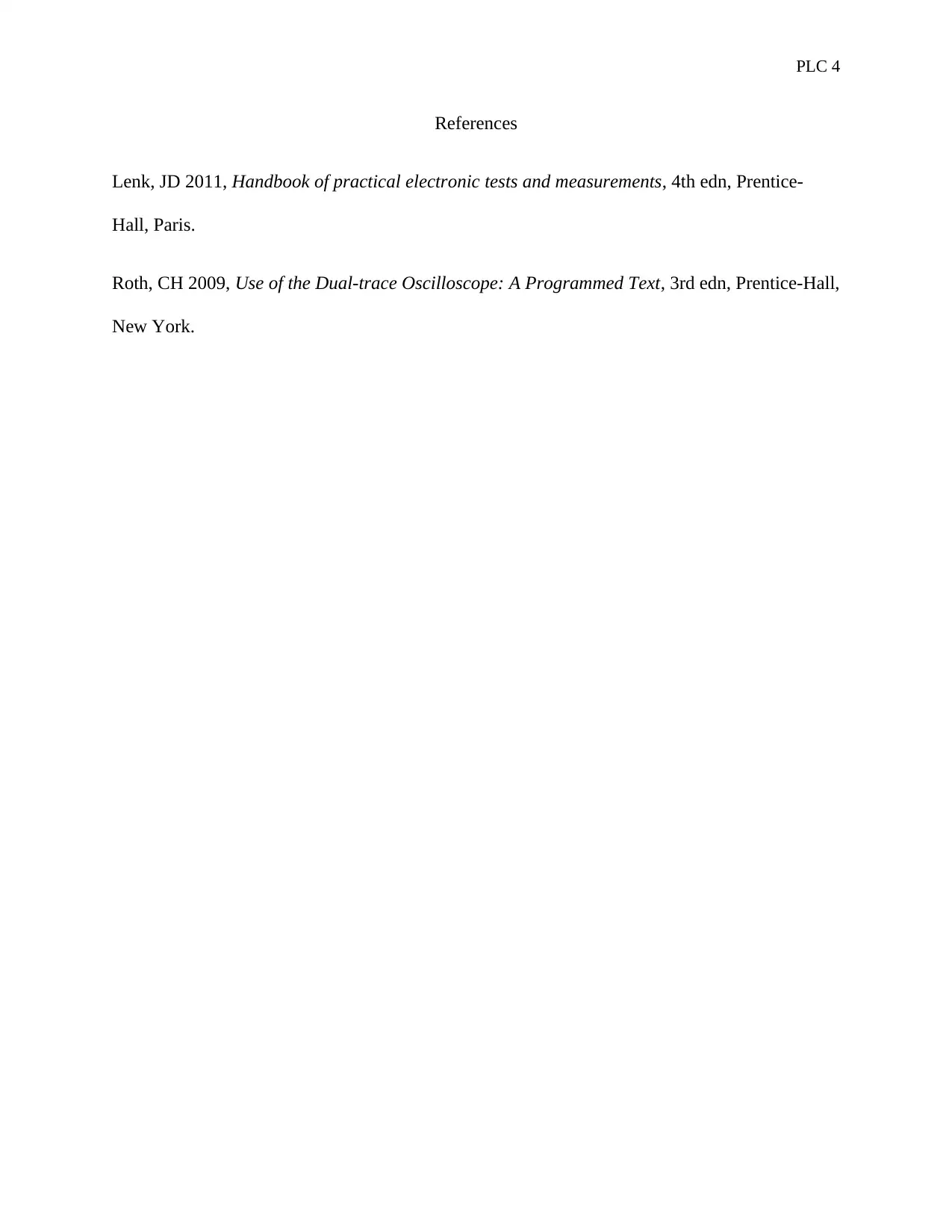Step-by-Step Guide to Oscilloscope Setup, Calibration & Usage
VerifiedAdded on 2023/06/15
|4
|676
|398
Practical Assignment
AI Summary
This document provides a practical guide to setting up and calibrating an oscilloscope, a fundamental tool in electronics. It outlines the general steps for setting up an oscilloscope, including examining the controls, turning on the device, setting the DIV/VOLTS and TIME controls, and connecting the probe. The document explains how an oscilloscope works by displaying signal voltage variations over time, which is crucial for circuit analysis and maintenance. The calibration process involves using a known signal strength and adjusting the device for accurate readings, utilizing knobs for horizontal and vertical scale adjustments, and focusing the display. The guide also details how to measure voltage differences, determine the period and frequency of square waves, and adjust calibration knobs for accurate peak-to-peak voltage and frequency readings. The document includes references to relevant handbooks for further reading.
1 out of 4





![[object Object]](/_next/static/media/star-bottom.7253800d.svg)